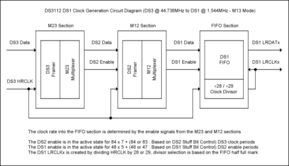parity bit
Have you ever wondered what a parity bit is and how it works? In this article, we will delve into the details of parity bits, exploring their significance, types, and applications. By the end, you’ll have a comprehensive understanding of this essential concept in data communication and storage.
What is a Parity Bit?

A parity bit, also known as a check bit, is an additional bit added to a binary code to detect errors during data transmission or storage. It is used to ensure that the total number of 1’s in a given data unit is either even (even parity) or odd (odd parity). This simple yet effective technique has been widely employed in various fields, including computer science, telecommunications, and networking.
Types of Parity Bits

There are two main types of parity bits: even parity and odd parity.
| Type | Description |
|---|---|
| Even Parity | In even parity, the total number of 1’s in the data unit, including the parity bit, is even. If the number of 1’s is odd, the parity bit is set to 1 to make the total even. |
| Odd Parity | In odd parity, the total number of 1’s in the data unit, including the parity bit, is odd. If the number of 1’s is even, the parity bit is set to 1 to make the total odd. |
Both even and odd parity bits serve the same purpose of error detection, but they differ in how they handle the parity bit. The choice between even and odd parity depends on the specific requirements of the system or application.
How Parity Bits Work

When a data unit is transmitted or stored, the sender calculates the parity bit based on the number of 1’s in the data unit. The receiver then checks the received data unit to ensure that the parity bit matches the expected parity. If the parity bit does not match, it indicates that an error has occurred during transmission or storage.
Here’s a step-by-step explanation of how parity bits work:
- The sender calculates the parity bit based on the number of 1’s in the data unit.
- The sender appends the parity bit to the data unit.
- The receiver receives the data unit, including the parity bit.
- The receiver calculates the parity bit based on the received data unit.
- The receiver compares the calculated parity bit with the received parity bit.
- If the parity bits match, the data unit is considered to be error-free.
- If the parity bits do not match, an error has occurred, and the receiver requests the sender to retransmit the data unit.
Applications of Parity Bits
Parity bits have numerous applications in various fields. Some of the most common applications include:
-
Computer Memory: Parity bits are used to detect and correct errors in computer memory, ensuring data integrity.
-
Telecommunications: Parity bits are employed in telecommunications to detect errors in data transmission, improving the reliability of communication systems.
-
Networking: Parity bits are used in networking protocols to ensure data integrity during transmission.
-
Storage Devices: Parity bits are utilized in storage devices, such as hard drives and solid-state drives, to detect and correct errors in stored data.
Limitations of Parity Bits
While parity bits are an effective method for error detection, they have some limitations:
-
Single-bit Error Detection: Parity bits can only detect single-bit errors. If multiple bits are corrupted, the parity bit may not detect the error.
-
No Error Correction: Parity bits cannot correct errors. They can only detect errors and request retransmission or correction.
-
Increased Data Size: Parity bits require additional space in the data unit, increasing the overall size of the data.
Conclusion
Parity bits are a fundamental concept in data communication and storage,







